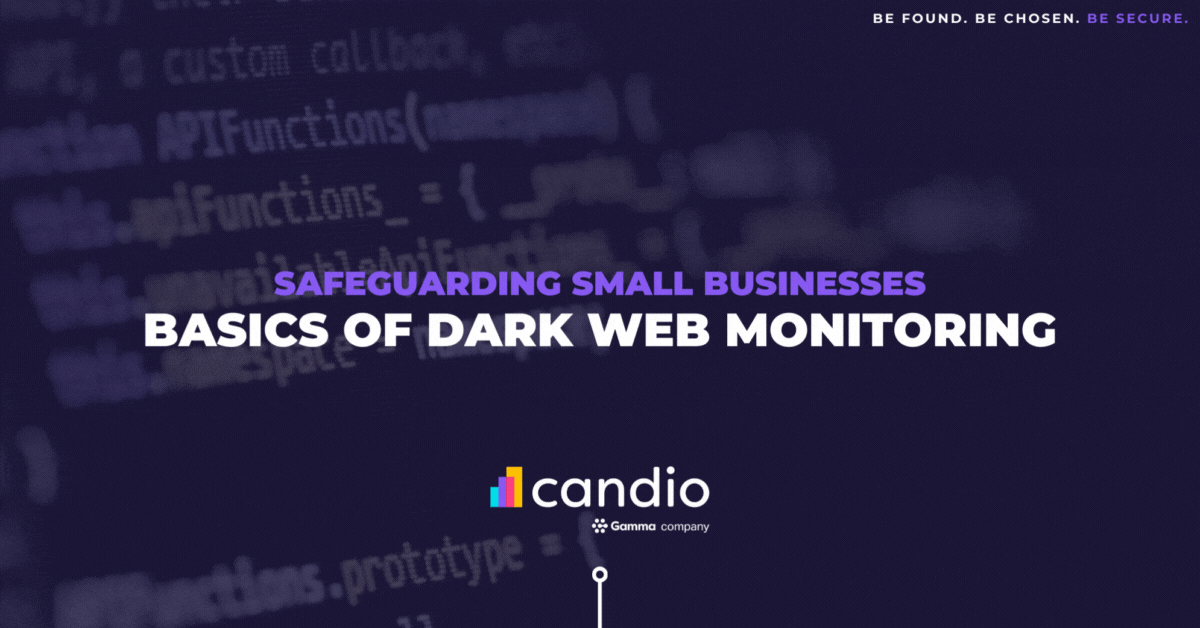written by Tom Chedham
For small businesses navigating the digital landscape, the threat of cybercrime, particularly on the dark web, is a significant concern. The dark web is an underground marketplace where cybercriminals trade stolen data, hacking tools, and other illicit goods.
In this blog post, we’ll discuss basic dark web monitoring strategies tailored for small businesses, helping them stay ahead of potential threats and safeguard their sensitive information.
Understanding the Dark Web:
The dark web operates in the shadows of the internet, accessible only through specialised browsers and networks. It’s essential for small businesses to recognise the potential risks emanating from this clandestine realm, as cybercriminals often target organizations of all sizes.
Basic Dark Web Monitoring Strategies for Small Businesses
1. Employee Training and Awareness
Educating employees about the risks associated with the dark web is the first line of defense. Conduct regular training sessions to raise awareness about phishing attempts, social engineering tactics, and the importance of maintaining strong, unique passwords. A vigilant workforce is a crucial asset in preventing unauthorised access to company information.
2. Password Hygiene and Credential Monitoring
Enforce strong password policies within the organisation and ensure that employees use unique credentials for various accounts. Implement credential monitoring tools that can detect compromised credentials on the dark web. These tools alert businesses when employee credentials are discovered in the hands of cybercriminals, allowing for prompt action, such as password resets.
3. Dark Web Monitoring Services
Consider investing in dark web monitoring services that scan the dark web for mentions of your business’ domain, email addresses, or other sensitive information. These services can provide early warnings if any data associated with your organisation appears in underground forums or marketplaces.
4. Regular Software Updates and Patch Management
Cybercriminals often exploit vulnerabilities in outdated software. Ensure that all software and systems are up to date with the latest security patches. Implement a robust patch management process to address vulnerabilities promptly and minimise the risk of exploitation.
5. Two-Factor Authentication (2FA)
Implement 2FA wherever possible, especially for critical systems and sensitive accounts. This additional layer of security adds a significant barrier for cybercriminals attempting unauthorised access, even if login credentials are compromised.
6. Vendor and Supply Chain Security
Small businesses often rely on external vendors and suppliers. Ensure that these partners follow adequate cybersecurity practices and conduct regular assessments of their security measures. A compromise in the supply chain can have far-reaching consequences for small businesses.
Conclusion:
While small businesses may not have the extensive resources of larger enterprises, implementing basic dark web monitoring strategies is crucial for protecting sensitive information and maintaining business continuity.
By fostering a cybersecurity-aware culture, adopting best practices, and leveraging monitoring services, small businesses can significantly reduce their vulnerability to dark web threats.
Remember, the key to cybersecurity is not just defense but staying one step ahead of potential threats, and these basic strategies lay the groundwork for a more secure digital environment.
